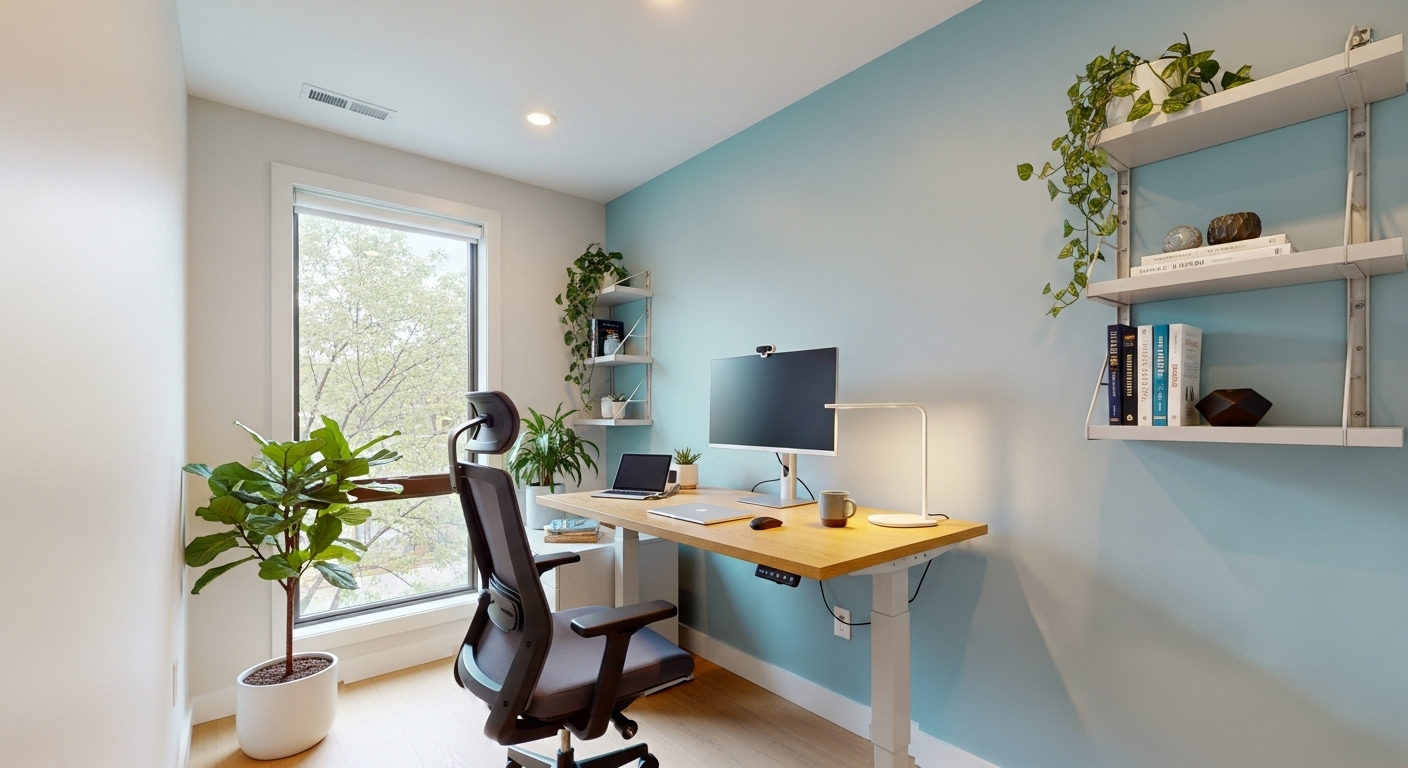The great remote work experiment has evolved. What began as a temporary solution has solidified into a permanent reality for millions of professionals worldwide. The initial scramble to find a quiet corner and a stable Wi-Fi connection has given way to a more profound question: How do we not just function, but truly thrive in this new paradigm? The answer lies not in simply replicating the old office routine at home, but in seizing the opportunity for a radical redesign of our professional and personal lives. This is the shift from passive adaptation to active architecture—from letting remote work happen to you, to intentionally designing a life where career ambition and personal well-being are deeply integrated. This guide moves beyond basic tips and offers a strategic framework for crafting your own sustainable and fulfilling remote work reality. We will explore how to architect an environment that fuels focus, manage your energy instead of just your time, master the art of asynchronous communication, build vital social connections from afar, and proactively steer your career growth, ensuring your work life empowers, rather than consumes, your entire existence.
Architecting Your Environment: Beyond the Desk in the Corner
The success of a remote career often begins with the physical space you inhabit for forty hours a week. Treating your workspace as an afterthought is a common mistake that can subtly erode productivity and mental clarity. Architecting your environment means consciously designing a space that signals to your brain it’s time to focus. This goes far beyond simply having a desk. Consider ergonomics first: an investment in a supportive chair, an external monitor at eye level, and a proper keyboard can prevent the chronic neck and back pain that plagues many home-based workers. Lighting is equally crucial; positioning your desk to take advantage of natural light can boost mood and energy, while a good desk lamp can reduce eye strain during darker hours. The key is creating a clear psychological boundary. When you enter this space, you are at work. When you leave, you are not. This separation is vital for preventing the dreaded work-life bleed. However, a single dedicated space can also lead to monotony. This is where the concept of the ‘third space’ becomes a powerful tool. Intentionally planning to work from a library, a quiet café, or a day-pass coworking space once or twice a week can break the routine, spark new ideas, and provide a much-needed change of scenery, combating the feeling of being stuck in a single location and fostering a more dynamic work experience.
Mastering the Clock: From Time Management to Energy Management
In a traditional office, the rhythm of the day is often dictated by external cues: colleagues arriving, scheduled meetings, the collective lunch break. At home, you are the sole conductor of your daily orchestra, a freedom that can be as daunting as it is liberating. The most effective remote professionals learn to shift their focus from mere time management to the more nuanced practice of energy management. It’s not about how many hours you are chained to your desk, but about the quality and intensity of focus during those hours. Start by understanding your personal chronotype. Are you a morning lark who does your best deep work before noon, or a night owl whose creativity peaks in the afternoon? Structure your most demanding, high-focus tasks during your natural energy peaks, and relegate administrative, low-energy tasks to your slumps. Techniques like time-blocking, where you schedule specific ‘blocks’ for specific tasks, can create the structure the office once provided. This practice also helps combat ‘digital presenteeism’—the anxiety-fueled need to appear constantly available online. By blocking out ‘deep work’ sessions and communicating this to your team, you give yourself permission to disconnect from the endless stream of notifications and perform the concentrated work that truly moves the needle. The goal is to build a sustainable rhythm that honors your natural energy flows, leading to greater output with less exhaustion.
The Communication Cadence: Excelling in an Asynchronous World
The biggest operational shift in the move to remote work is the balance between synchronous (real-time, like a video call) and asynchronous (on your own time, like email or a shared document) communication. While synchronous communication is necessary for brainstorming and complex problem-solving, an over-reliance on it leads to ‘Zoom fatigue’ and a calendar packed with meetings that kill productivity. Thriving remotely means mastering the art of asynchronous communication. This is the engine of effective distributed teams, allowing for deep work and accommodating different time zones and schedules. Excelling here requires a new level of clarity and intention in your writing. Vague, one-line emails must be replaced with clear, comprehensive updates that provide all necessary context, anticipate questions, and define next steps. Shared documents become the central source of truth, meticulously updated to reflect project progress. As Cal Newport, author of ‘Deep Work,’ argues, the ability to perform cognitively demanding tasks without distraction is becoming increasingly rare and valuable.
“To produce at your peak level you need to work for extended periods with full concentration on a single task free from distraction. Put another way, the type of work that optimizes your performance is deep work.”
Mastering asynchronous communication is the key to unlocking these extended periods of deep work, making you a more efficient and valuable team member.
Building Social Capital: Combating Isolation and Fostering Connection
While productivity can soar in a remote setting, the primary challenge that often emerges is a profound sense of isolation. The spontaneous ‘water cooler’ conversations, casual coffee breaks, and shared lunches that build workplace camaraderie and social capital don’t happen by default when you work from home. These connections must be built with the same intention you apply to a project plan. The first step is to be proactive. Schedule regular, informal 15-minute virtual coffee chats with colleagues just to catch up on a human level. Champion or actively participate in non-work-related Slack or Teams channels centered around hobbies, pets, or shared interests. These digital spaces can replicate the casual social interactions of the office. It’s also critical to cultivate what sociologists call ‘weak ties’—connections with people outside your immediate team. These relationships are often the source of new ideas, opportunities, and organizational knowledge. Make a point to connect with individuals in other departments. Finally, don’t underestimate the power of occasional in-person interaction. If your company organizes team offsites or regional meetups, make it a priority to attend. These events are invaluable for cementing the digital relationships you’ve been cultivating, transforming avatars and email addresses into trusted, three-dimensional colleagues and reminding you that you are part of a larger community.
The Visibility Paradox: Managing Your Career Path from Afar
One of the most persistent anxieties for remote employees is the fear of ‘out of sight, out of mind.’ When your manager and senior leaders don’t physically see you working, how do you ensure your contributions are recognized and your career continues to advance? The solution lies in overcoming the visibility paradox by making your work, and your value, impossible to ignore. This requires a strategic and proactive approach to self-advocacy. Start by meticulously documenting your accomplishments. Don’t wait for your annual review; keep a running log of your wins, successful projects, and positive feedback. Share this information with your manager in your one-on-ones, framing it not as bragging, but as a clear summary of your progress and impact. Become a master of managing up. Provide regular, concise updates on your work, highlighting achievements and proactively flagging potential roadblocks. This demonstrates ownership and reliability. Seek out high-impact, cross-functional projects that give you exposure to different teams and leaders. Actively network within your own organization, setting up introductory calls to learn about other parts of the business. Finding a mentor becomes even more critical in a remote setting. A good mentor can be your advocate in rooms you’re not in, providing guidance and championing your growth. Your career path won’t manage itself; you must be its most active and articulate proponent.
Wellness Integration: Prioritizing Physical and Mental Health
The line between work and home has never been more blurred, making the integration of wellness practices not just a benefit, but a necessity for long-term success. The default state of remote work can be incredibly sedentary, leading to physical ailments and burnout. The first step is to consciously engineer movement back into your day. Your commute may be gone, but you can replace it with a morning walk to signal the start of your day. Take phone calls while walking around your home or neighborhood. Use a standing desk or set reminders to get up and stretch every hour. This physical maintenance is directly tied to mental performance. Equally important is establishing a clear ‘end of day’ ritual. This could be as simple as closing your laptop and immediately changing out of your ‘work clothes,’ taking a walk, or spending 15 minutes on a hobby. This ‘digital commute’ creates a psychological buffer that allows your brain to switch off and recharge. Be ruthless about protecting your non-working hours. Turn off notifications on your phone and communicate your availability clearly to your team. Recognize the signs of burnout—cynicism, exhaustion, and reduced efficacy—and don’t be afraid to use your vacation time to truly disconnect. A thriving remote career is a marathon, not a sprint, and sustainable performance is only possible when physical and mental health are treated as non-negotiable priorities.
Conclusion
Thriving in a remote work reality is an active, ongoing process of intentional design. It demands a fundamental shift from the passive acceptance of a 9-to-5 structure to the proactive architecture of a life where professional ambitions and personal fulfillment are woven together. As we’ve explored, this means becoming the deliberate architect of your physical and digital environments to cultivate focus. It requires evolving from a manager of time to a manager of your own energy, aligning your work with your natural rhythms. Success is found in mastering clear, asynchronous communication to unlock deep work and in consciously building the social capital that combats isolation. It involves overcoming the visibility paradox by strategically communicating your value and driving your own career advancement. Above all, it necessitates the deep integration of wellness, treating physical and mental health not as an afterthought, but as the very foundation upon which a sustainable and successful remote career is built. By embracing this mindset of ‘Life by Design,’ you move beyond simply working from home and begin to craft a more integrated, autonomous, and ultimately more rewarding way of living and working in the modern world.





